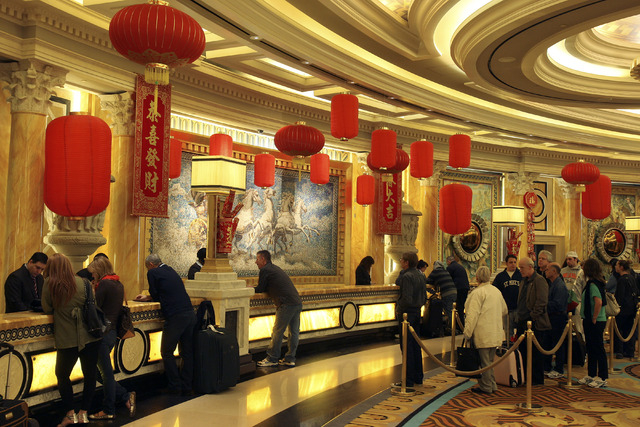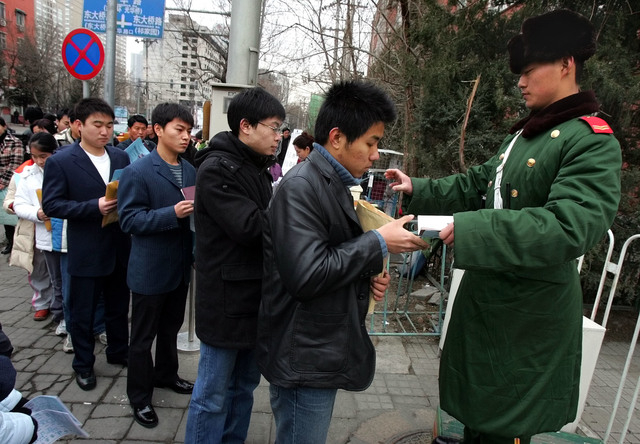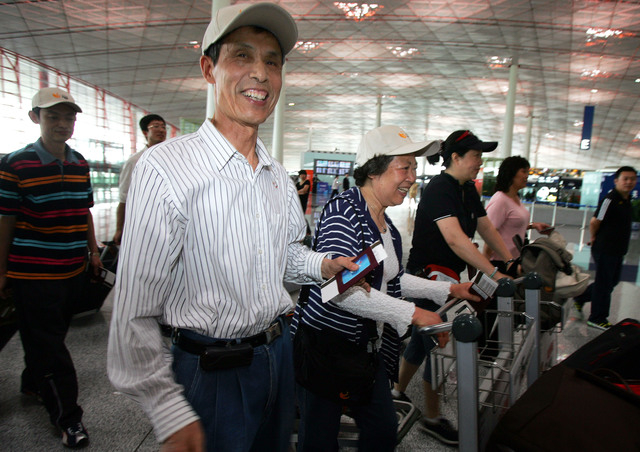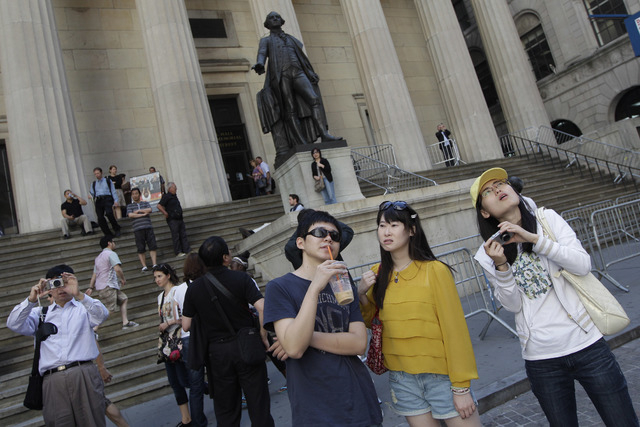New Chinese visa rules expected to boost tourism in US
NEW YORK — A rule change allowing Chinese visitors to return to the U.S. multiple times over a 10-year period is being hailed as a boon to American tourism, with the federal government predicting the economic impact could be $85 billion by 2021.
Chinese visitors are already familiar faces in major U.S. destinations such as New York City, San Francisco and Las Vegas, but other parts of the country could also see some a boost.
“One simple decision like this … is going to reap tremendous benefits to the country,” said Chris Thompson, president and CEO of Brand USA, the public-private partnership responsible for marketing the United States as a travel destination.
The U.S. and China jointly announced the change last week at a conference of world leaders in Beijing, and it has already gone into effect. Business and short-term visas that currently expire after one year will now be valid for 10 years, while student and cultural exchange visas will last for five.
Obtaining a U.S. visa involves waiting in long lines at a consulate during the work day, passing an interview and then waiting at least three days, a process that won’t change under the new rules.
“That is going to allow many folk the encouragement to go ahead and apply for the visa no matter how hard it is. … It’s worth the effort,” said Harry Chen, operator of San Francisco-based Joy Holiday, which books tours for Chinese tourists in the western U.S.
Ling Cong, manager of the American department at Beijing-based tourism company China Travel Service, said the longer visas would allow Chinese visitors to launch spur-of-the-moment trips.
“Before when Chinese travelers saw some cheap air tickets, they often didn’t seize the opportunity because of the issue of getting a visa,” Ling said.
Chinese have been among the fastest-growing and highest-spending U.S. visitors in recent years. In 2013, there were about 1.8 million Chinese visitors to the U.S., contributing about $21 billion to the economy.
According to government figures, Chinese visitors spend about $7,000 per person in the U.S., compared with the average of $4,500 for all overseas visitors. In announcing the visa change, the White House said it could result in $85 billion economic impact in the U.S. by 2021.
In New York City, Chinese visitors have increased more than 300 percent over the past five years, with 646,000 in 2013 and 743,000 expected by the end of this year. Las Vegas gets an estimated 300,000 Chinese visitors annually, and officials hope to see that number increase to more than 1 million by 2021.
Li Qing, a woman in her 30s who works for a securities company in Shenzhen, said in a telephone interview that she has been to the U.S. but would go more often with a 10-year visa. She hopes to get one soon, to go along with a 10-year visa she recently obtained for Canada, so that she can do combined trips to the two countries.
“This should have happened years ago,” she said. “In offering the 10-year visa now, I guess politics is making a concession to money.”
Catherine Prather, senior vice president of the National Tour Association, said the United States is “a dream destination” for Chinese travelers and said the rule changes could lead to more visits to national parks or smaller cities.
The benefits extend in both directions, as frequent American travelers to China will now be able to bypass the yearly effort to get visas. That process could be a tedious one, requiring long waits in lines.
“I go to China quite often,” said Phil Otterson, president of Abercrombie & Kent USA, a luxury tour company that offers trips to China. “It’s going to be a lot easier for me now.”
———
Associated Press writers Ian Mader and Yu Bing in Beijing, and Fu Ting in Shanghai contributed to this report.

























